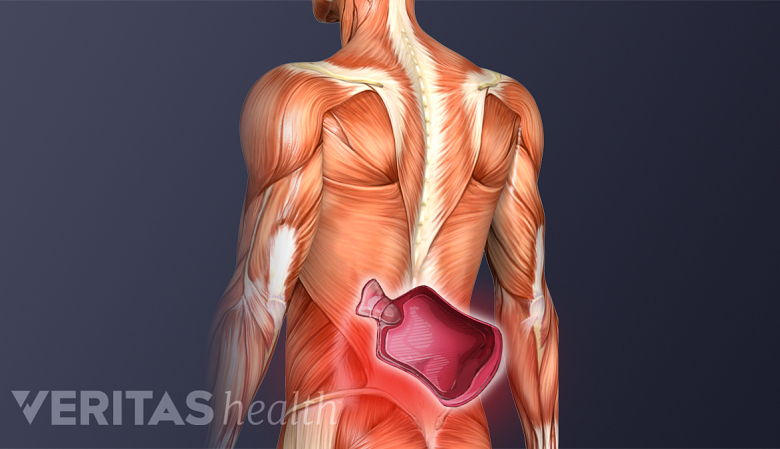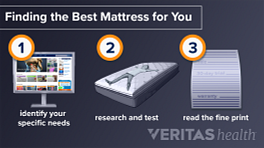It is widely agreed that most adults require between 7 and 9 hours of sleep per night for optimal physical and mental wellness. 1 Watson NF, Badr MS, Belenky G, et al. Recommended Amount of Sleep for a Healthy Adult: A Joint Consensus Statement of the American Academy of Sleep Medicine and Sleep Research Society. Journal of Clinical Sleep Medicine. 2015; 11 (6): 591-592. Yet it is not only the quantity of sleep that contributes to the healing process; the quality of sleep plays an essential role.
Sleep that is restorative for the body requires time spent in the deep non-REM and REM stages of the sleep cycle. As the individual occupies these phases in the night, chemical properties that replenish and repair the body are activated.
Considerable amounts of growth hormone are released when the body reaches the later stages of sleep. 2 Van Cauter E, Plat L, Scharf MB, et al. Simultaneous Stimulation of Slow-wave Sleep and Growth Hormone Secretion by Gamma-hydroxybutyrate in Normal Young Men. Journal of Clinical Investigation. 1997; 100 (3): 745-753. The secretion of growth hormone is necessary for stimulating growth in the body, cell reproduction, and cell regeneration. High-quality, restorative sleep, then, acts as a venue where the body’s healing process takes place. It is the opportune time for the spine to self-repair.
In This Article:
- How Back Pain Affects Sleep
- Restorative Sleep Brings Back Pain Relief
Get Restorative Sleep Despite Back Pain
A heat pack on the lower back before bedtime provides a relaxing feeling and promotes better sleep.
Getting an adequate amount of healthy, restorative sleep is beneficial for dealing with back pain. Yet back pain makes it difficult to attain quality sleep. There are a number of ways to improve the chances of progressing into restorative sleep despite the pain.
- Find a new mattress. Back pain may be exacerbated by a mattress that is old and saggy, or simply too firm or too soft. Sleeping on a mattress that provides the right amount of support and comfort is important for attaining quality sleep. Adjustable beds may also be considered; many people with lower back or neck pain find it more comfortable to sleep in a slightly reclining position.
- Loosen back muscles before bedtime. Stretching out painful areas may help release muscle tension. Local application of heat therapy, such as a heating pad, helps stretch and relieve soft tissues around the spine. These two simple actions may lessen discomfort enough to enable sleep.
- Use relaxation techniques. Mindful meditation, for example, has been shown to reduce the perception of pain, and may help allow enough relief to fall asleep. Other relaxing bedtime rituals, such as peaceful visualization or focused breathing, may provide aid in keeping attention away from the back pain and creating a more comfortable environment.
- Try cognitive behavioral therapy. Cognitive behavioral therapy for insomnia (CBT-I), in which a patient works with a therapist to develop behavioral habits and make lifestyle adjustments, has been shown to help improve sleep. 3 Smith, MT, Perlis ML, Smith MS, et. al. Comparative meta-analysis of pharmacotherapy and behavior therapy for persistent insomnia. The American Journal of Psychiatry. 2002 Jan; 159 (1):5-11. Even patients receiving CBT-I through via online services have experienced positive outcomes. 4 Ye YY, Zhang YF, Chen J, et. al. Internet-Based Cognitive Behavioral Therapy for Insomnia (ICBT-i) Improves Corbmobid Anxiety and Depression - A Meta-Analysis of Randomized Controlled Trials. PLoS One. 2015; 10(11):eo142258.
- Try a different sleeping position. Sleeping on the side, curled into a fetal position, with a pillow placed in between the knees, may help with spinal alignment and relieve pressure. Sleeping on the back, with knees slightly elevated by a pillow and another flat pillow tucked under the head, may promote spinal alignment and reduce stress on pressure points. As mentioned above, sleeping on the back with the upper body in a reclined position and the knees slightly bent also reduces stress across the lower back.
See Mattresses and Sleep Positions for Each Back Pain Diagnosis
Getting deep, restorative sleep is not a cure-all for back pain, but it promotes several benefits that may positively contribute to pain relief.
- 1 Watson NF, Badr MS, Belenky G, et al. Recommended Amount of Sleep for a Healthy Adult: A Joint Consensus Statement of the American Academy of Sleep Medicine and Sleep Research Society. Journal of Clinical Sleep Medicine. 2015; 11 (6): 591-592.
- 2 Van Cauter E, Plat L, Scharf MB, et al. Simultaneous Stimulation of Slow-wave Sleep and Growth Hormone Secretion by Gamma-hydroxybutyrate in Normal Young Men. Journal of Clinical Investigation. 1997; 100 (3): 745-753.
- 3 Smith, MT, Perlis ML, Smith MS, et. al. Comparative meta-analysis of pharmacotherapy and behavior therapy for persistent insomnia. The American Journal of Psychiatry. 2002 Jan; 159 (1):5-11.
- 4 Ye YY, Zhang YF, Chen J, et. al. Internet-Based Cognitive Behavioral Therapy for Insomnia (ICBT-i) Improves Corbmobid Anxiety and Depression - A Meta-Analysis of Randomized Controlled Trials. PLoS One. 2015; 10(11):eo142258.









